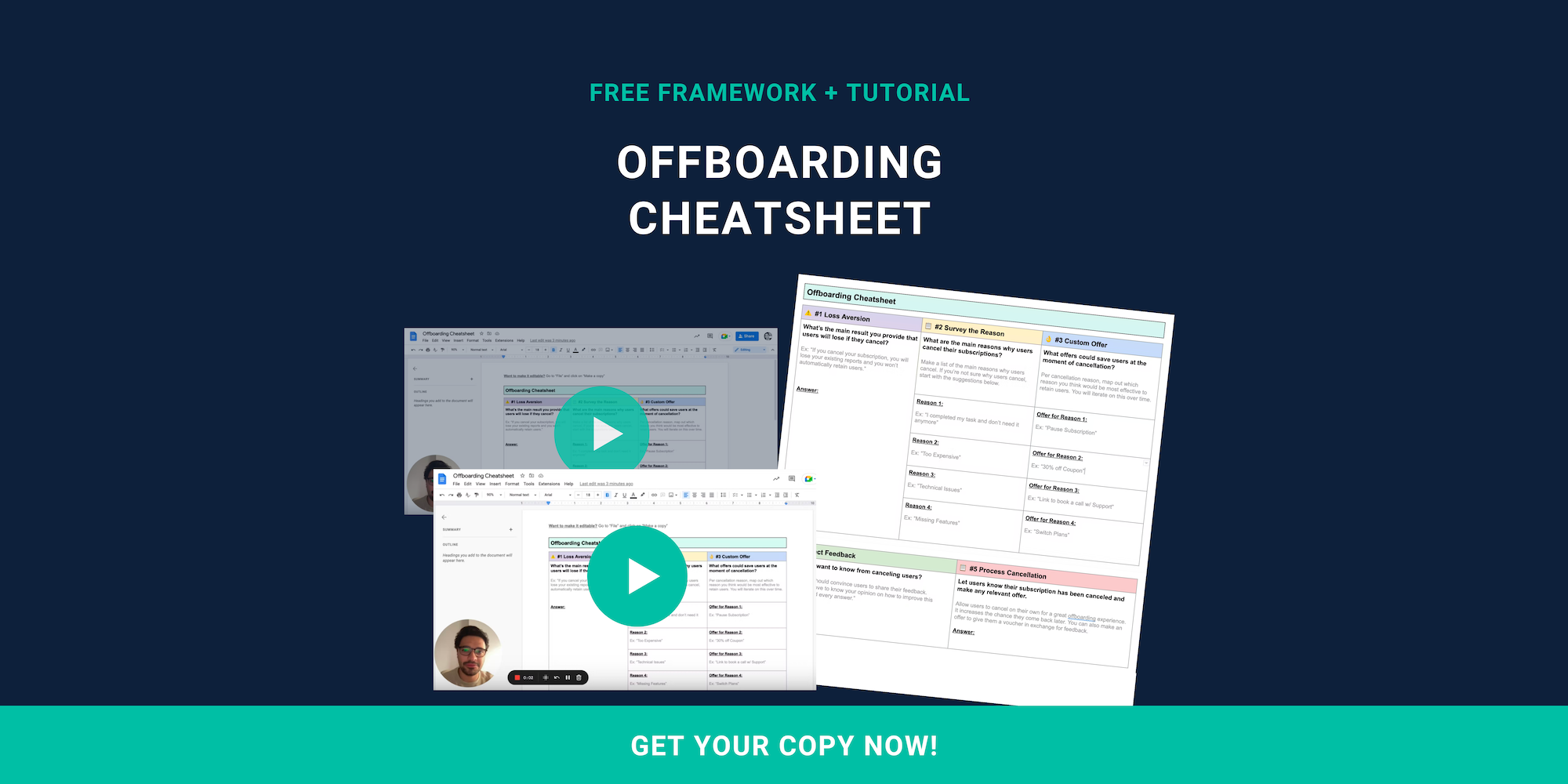Table of Contents
- What Is The California Subscription Cancellation Law?
- When Did I Realize Our Cancellation Process Needed Improvement?
- What Changes Did We Implement?
- How Did Raaft Help Us Streamline The Cancellation Process?
- Why Should SaaS Businesses Pay Attention To California's ARL?
- What Steps Can You Take To Ensure Compliance?
The California subscription cancellation law is a key focus for many SaaS teams right now.
When I first launched my SaaS tool, I focused on building features, acquiring users, and scaling the business.
Like many founders, I also had to think about the fine print in our subscription terms and complying with California's Automatic Renewal Law (ARL).
This legislation mandates:
- Clear disclosure of subscription terms
- Affirmative consent from users
- Straightforward cancellation processes.
It's not too much to ask. After all, SaaS users deserve fair treatment as consumers.
Compliance is straightforward, particularly when approached with good intentions.
Non-compliance poses significant legal risks, undermines customer trust, and harms your brand.
Legal Disclaimer
This article is for informational purposes only and does not constitute legal advice.
I'm sharing my experience as a SaaS founder considering California's subscription laws.
For legal guidance, please consult a qualified attorney.
What Is The California Subscription Cancellation Law?
California's ARL, codified in Business and Professions Code Section 17600, requires businesses to:
- Clearly disclose subscription terms before charging the customer.
- Obtain affirmative consent to the subscription terms.
- Provide a straightforward cancellation process.
- Send renewal reminders for certain subscription types.
These provisions aim to protect consumers from unexpected charges and ensure transparency in subscription agreements.
When Did I Realize Our Cancellation Process Needed Improvement?
While reviewing our user experience, I attempted to cancel a subscription as a customer would.
I discovered that our process was a little too cumbersome and required a few too many steps.
I think it's always good to test these sequences every now and again to put yourself in the customer's shoes.
What I discovered didn't risk putting us at non-compliance with California's ARL, but I was more concerned about frustrating users who could potentially want to resubscribe further down the line.
The last thing you want to do is alienate your customers with a laborious cancellation flow and put them off resubscribing ever again.
What Changes Did We Implement?
For me, it was about simplifying the whole cancellation flow and bringing it back to basics.
I also double-checked the ARL to make sure that we definitely complied and the cancellation flow was straightforward enough.
Here are just some of the steps others are taking to comply with ARL:
- Updating their subscription terms to be more transparent.
- Implementing systems to record and store customer consent.
- Simplifying the cancellation process to be user-friendly and immediate.
- Setting up automated renewal reminders for applicable subscription plans.
When you think about it, these are all things you would expect from any reputable SaaS business.
It's not too much to ask, and it's not too difficult to execute.
You're not being asked to develop complex, intricate systems.
Instead, it's just about cutting things back and creating a barebones, functional cancellation flow that keeps things easy for everyone.
How Did Raaft Help Us Streamline The Cancellation Process?
We have recently tested integrating Raaft into our system to manage cancellations effectively.
For us, Raaft provided:
- A user-friendly cancellation interface.
- Tools to collect customer feedback post-cancellation.
- Features to ensure compliance with legal standards.
Using Raaft was really about upping our game when it comes to learning why users choose to cancel.
Raaft helps us collect valuable product feedback from users without making the cancellation flow feel convoluted or laborious for our users.
Why Should SaaS Businesses Pay Attention To California's ARL?
California's ARL is among the strictest in America, and non-compliance can lead to legal penalties and reputational damage.
Operating within the rules and maintaining compliance is good for businesses and consumers.
Other states are adopting similar regulations, making it essential for SaaS businesses to:
- Stay informed about legal requirements in all operating regions.
- Regularly review and update subscription and cancellation processes.
- Prioritize transparency and user autonomy in subscription models.
What Steps Can You Take To Ensure Compliance?
The best thing you can do is consult with a qualified legal professional who can assess your cancellation flow and make sure you are compliant.
In your initial first steps, you can:
- Review your subscription terms for clarity and transparency.
- Implement systems to record affirmative customer consent.
- Simplify the cancellation process to be user-friendly and immediate.
- Send timely renewal reminders as required by law.
For more detailed information on California's ARL and its requirements, you can refer to this comprehensive guide: California Automatic Renewal Law Compliance Guide.
If you need assistance in reviewing your subscription processes or integrating tools like Raaft, you can book a demo or get started for free today.

Offboarding Cheatsheet
This framework + video tutorial will help you design a better cancellation process.
Some of our featured articles

Miguel Marques

Adam Crookes

Adam Crookes
Customer Success insights in your inbox
Helping Founders and Customer Success Managers handle customer retention effectively.
We will only ever send you relevant content. Unsubscribe anytime.


